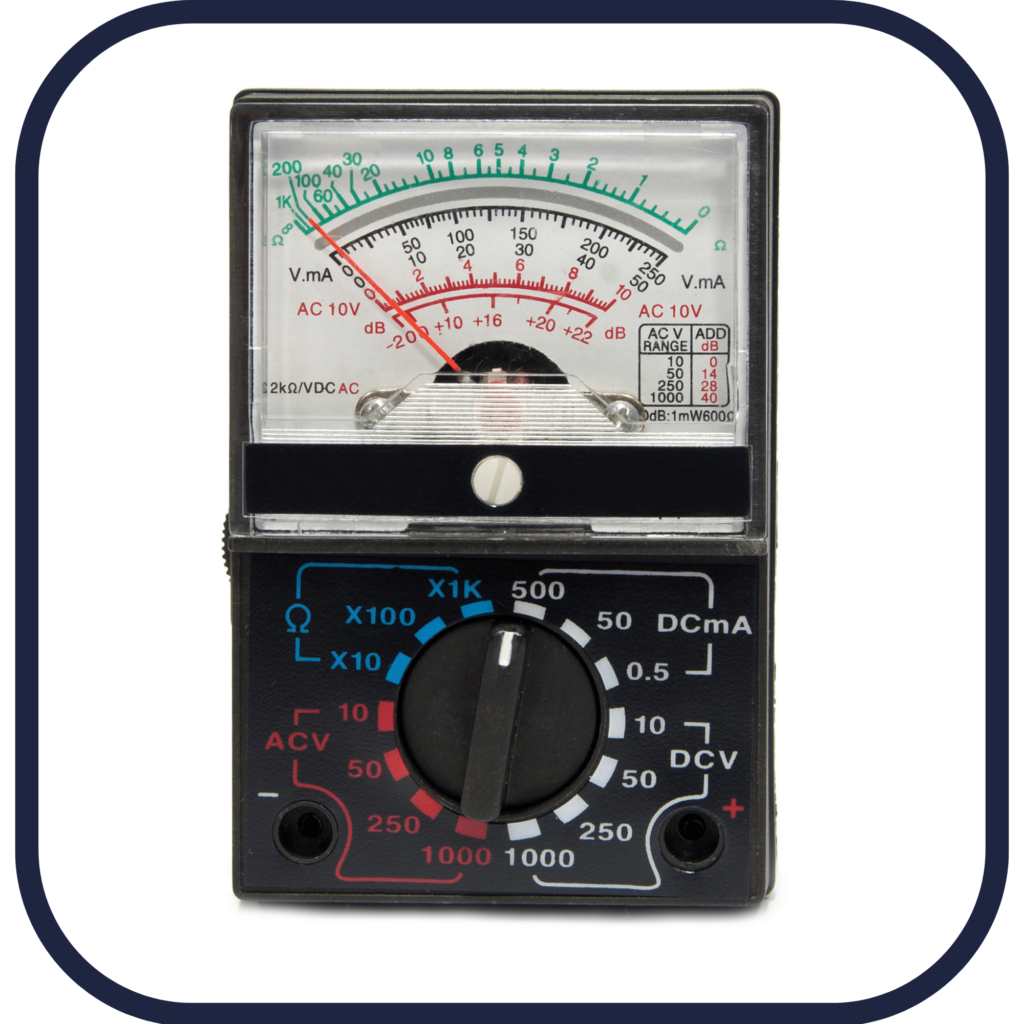30-second summary
Ammeter
An instrument used to measure currents is called an ammeter. To measure the current in a wire, you usually have to break or cut the wire and insert the ammeter so that the current to be measured passes through the meter.
The principle of operation of ammeters is based on the interaction between an electric current and a magnetic field. Ammeters are typically designed as a low-resistance device that is placed in series with the circuit being measured.
Analog and digital ammeters are two types of devices that are used to measure electric current.
Here are three examples of electric currents that can be measured by ammeters:
- Household circuits: The current flowing through a typical household circuit in the United States is 15-20 amperes.
- Automotive circuits: The current flowing through the battery or alternator of a car is typically 50-150 amperes.
- Small electronics: The current flowing through the power supply of a small electronic device, such as a cell phone or laptop, is typically 0.1-1 ampere.

Characteristics of Ammeters
Here are some of the key characteristics of ammeters:
- Current Range: Ammeters are designed to measure a specific range of current, usually in amperes (A). The current range of an ammeter determines the maximum current it can measure without damaging the device.
- Sensitivity: The sensitivity of an ammeter refers to the smallest amount of current that it can measure accurately. The sensitivity is usually expressed in milliamperes (mA) or microamperes (µA).
- Accuracy: The accuracy of an ammeter is the degree to which its readings reflect the true value of the current in the circuit. The accuracy is usually expressed as a percentage of the full-scale reading.
- Resolution: The resolution of an ammeter is the smallest change in current that it can detect. It is usually expressed in milliamperes (mA) or microamperes (µA).
- Display: Ammeters typically have a digital or analog display that shows the current reading. Digital displays use numeric digits, while analog displays use a needle or pointer that moves across a scale.
- Input Impedance: The input impedance of an ammeter is the resistance of the device to the flow of current in the circuit being measured. A high input impedance is desirable because it minimizes the amount of current that is diverted from the circuit being measured.
- Power Consumption: The power consumption of an ammeter is the amount of power it consumes when in use. Low-power ammeters are desirable because they do not add significant power consumption to the circuit being measured.
Overall, the characteristics of an ammeter are important to consider when selecting a device for a particular application. The current range, sensitivity, accuracy, resolution, display, input impedance, and power consumption should all be taken into account when choosing an ammeter to ensure accurate and reliable measurements.

